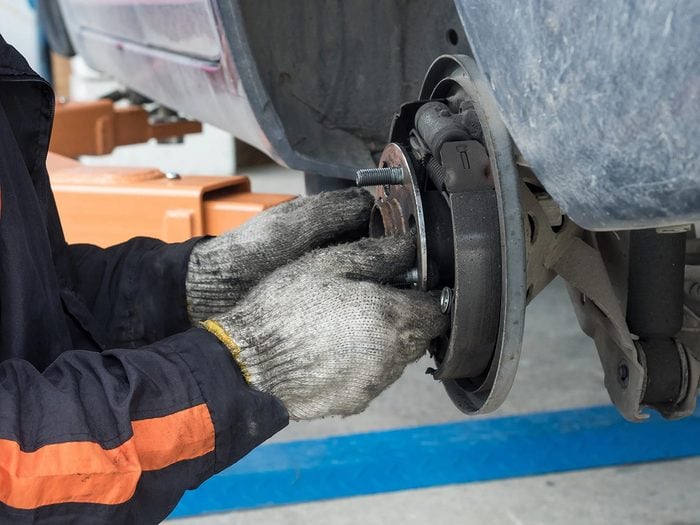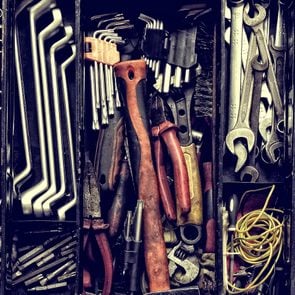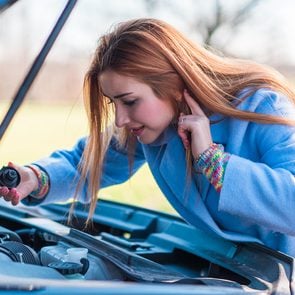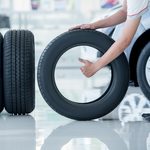Beware These 9 Symptoms of Bad Wheel Bearings

Wheel bearings are crucial for safe driving. Would you recognize the signs if one of your wheel bearings is failing?
Simply stated, wheel bearings allow cars and trucks to run smoother and more efficiently by reducing friction and supporting vehicle weight. When they start to fail, you can usually tell.
Read on to learn the most common bad wheel bearing symptoms, based on my experience (50 years in the industry) and that of Joe Simes, a National Institute for Automotive Service Excellence (ASE) certified and Toyota master technician. But first, a little background.
What are wheel bearings and what do they do?
On modern front- and four-wheel drive cars, wheel bearings are a set of permanently sealed, precisely machined steel ball or straight roller bearings. The balls, or rollers, are encased in a “cage” that supports the bearings, allowing them to rotate freely.
The cage and rollers are held together inside a hardened metal ring called a “race.” The seal keeps grease in and damaging water and debris out. Wheel bearings are installed inside, and secured to, the suspension, either by press fit, bolts or a snap-ring. Once mounted, the wheel bearing rides on the axle shaft, allowing the tire/wheel to spin effortlessly.
Note: Older cars with drum brakes and trailers use a set of two tapered roller bearings that face each other.
What are the first signs of wheel bearing failure?
According to Simes, a failing wheel bearing will likely produce a soft, faint vibration that’s felt before it’s heard. There may also be a vague rhythmic humming or droning sound that increases over time and with speed.
Do not ignore these warning signs. They’ll only get louder, and more serious symptoms may become noticeable.
What other symptoms indicate bad wheel bearings?
Unusual noises coming from the wheels
You’ll hear clicking, cracking, grinding, snapping, or whining noises coming from your wheels or tires. They’ll increase when accelerating or turning.
Poor handling
Steering feels unresponsive or sloppy when turning or braking, or at highway speeds.
Pulling to one side while driving or braking
A bad wheel bearing can cause a tire/wheel to move or glide unevenly or sluggishly. It can also cause your brakes to drag, pulling your vehicle to one side when you try to stop.
Shaking while driving
Unlike unbalanced tires, shaking caused by a bad wheel bearing should be obvious from the side of the car where the bearing is failing.
Uneven tire wear
Any loose or vibrating suspension part can cause tires to wear unevenly.
Anti-lock braking (ABS) dash comes light on
On many vehicles, the ABS sensor is built into the wheel bearing, or it’s externally mounted adjacent to the spinning part of the bearing where the sensor measures vehicle speed. Damaged from a wobbly wheel bearing, the sensor will send erratic readings to the vehicle’s computer, illuminating the ABS light.
Excess heat from the tires and wheels
Friction from a failing wheel bearing produces heat. After driving, without touching the tires or wheels, carefully walk around your vehicle and use a non-touch thermometer to measure if one is hotter than the others.
Why do wheel bearings fail?
Wheel bearings should last 135,000 to 160,000 kilometres. They can fail due to:
- Low tire pressure
- Hitting a pothole, bouncing off a curb or getting into an accident
- Driving on unbalanced tires or an out of alignment suspension
- Harsh climates
- Failed seals
- Oversized wheels and tires
- Under- or over-tightened a hub nut
Can you drive a car with bad wheel bearings?
Absolutely not. It’s crucial to get bad wheel bearings diagnosed and replaced ASAP. If not, you could lose a wheel or get in an accident.
How much does it cost to fix or replace bad wheel bearings?
The average cost to replace a sealed wheel hub bearing is $350 per wheel. However, depending on the make and model, shop labour rate, the cost of the bearing itself and any additional damage, the total could exceed $1,000.
Can I fix or replace wheel bearings myself?
It depends.
You can service or replace tapered wheel bearings yourself. Never reuse any wheel bearing that’s loose, worn, noisy or shows any signs of wear.
But sealed wheel bearings are non-serviceable and should never be repaired, only replaced. Even if a pro suggests repairing a bearing, don’t let them. Trying to reuse a damaged wheel bearing can result in an accident and severe injury.
Depending on the vehicle, you can save hundreds in labour replacing wheel bearings yourself. Most auto parts stores will lend you the specialty tools and equipment needed to replace a wheel bearing.
NOTE: Whether you DIY or your mechanic replaces the bearing, always install a new axle hub nut. Most hub nuts are prevailing torque fasteners, used on critical components (like securing axle shafts to hub bearings) where a loose nut could lead to disastrous consequences.
About the expert
Joe Simes is an ASE and Toyota master technician. After 20 years in the industry, Simes recently became a Pennsylvania Department of Education certified automotive technology instructor at North Montco Technical Career Center in Lansdale, Pennsylvania.
Next, check out these 10 must-try Canadian road trips.






